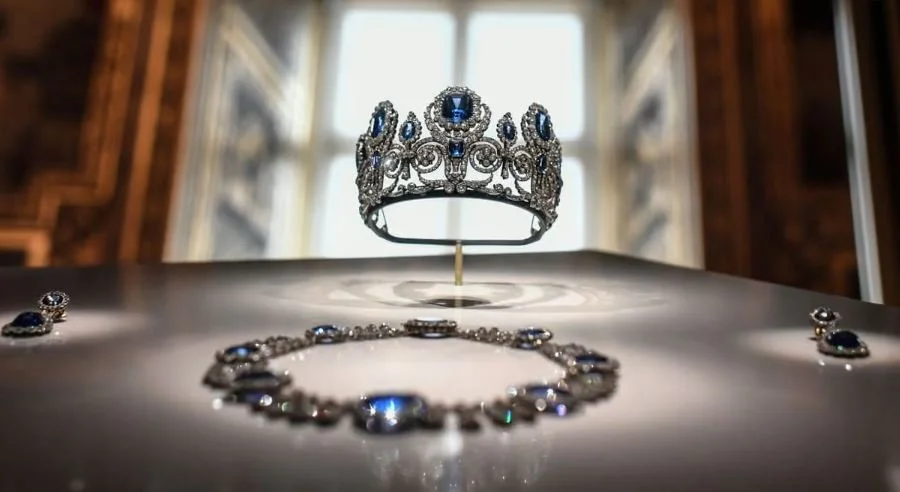The Louvre Jewel Heist
The world famous museum attracts tens of thousands of people every day. File pic: AP. Image from Sky News.
On 19 October 2025, the Louvre Museum in Paris, one of the world’s most visited and symbolically significant cultural institutions, was the site of a meticulously executed daylight robbery. A group of unidentified thieves stole jewels described by French authorities as “priceless,” prompting renewed scrutiny of museum security and the broader vulnerabilities inherent in the stewardship of cultural heritage.
According to the French Interior Ministry, the theft occurred at approximately 09:30 local time (08:30 GMT), shortly after the museum opened to the public. Eyewitness reports and preliminary police statements indicate that the perpetrators, believed to number three or four, used a vehicle-mounted mechanical ladder to access a first-floor window overlooking the River Seine. Once inside, the suspects used small chainsaws to break through reinforced display cases in the Galerie d’Apollon (Gallery of Apollo), which houses France’s royal jewels. Within minutes, they absconded on scooters, leaving the ladder at the scene.
Map depicting Louvre and Ladder used by the thieves, image from Sky.
The museum was immediately evacuated and remained closed for the remainder of the day while investigations commenced. French Culture Minister Rachida Dati confirmed that one object believed to be the 19th-century crown of Empress Eugénie was recovered nearby, damaged and missing several stones. The crown, an ornate piece featuring golden eagles and set with over 1,300 diamonds and 56 emeralds, represents not only extraordinary craftsmanship but also a tangible link to France’s imperial history.
Authorities have not yet confirmed the full inventory of stolen items, but the Galerie d’Apollon contains the core of France’s historic regalia, including pieces associated with the Bourbon and Napoleonic dynasties. French Interior Minister Laurent Nuñez described the theft as an attack on “immeasurable heritage value,” emphasising that the loss extends beyond monetary worth.
Officials have not yet released a full list of the stolen objects. However, the French Culture Minister, Rachida Dati, confirmed that one item (a 19th-century crown belonging to Empress Eugénie) was recovered near the museum, apparently dropped during the escape. The piece was found damaged and missing several stones.
Royal jewellery on display in the Apollon gallery in 2020. Photograph: Stéphane de Sakutin/AFP/Getty Images
According to information published on the Louvre’s website, Empress Eugénie’s crown is composed of gold and adorned with 1,354 diamonds and 56 emeralds. The crown, created during the Second Empire, is notable for its intricate workmanship and its decorative motif of golden eagles. Its recovery, albeit in damaged form, offers limited insight into the broader scope of the theft.
The Galerie d’Apollon, where the theft took place, forms part of the museum’s Denon Wing and overlooks the River Seine. The gallery, richly decorated with gilded ornamentation and ceiling paintings, was designed in the 17th century and houses part of France’s collection of royal regalia and decorative arts. It is among the most symbolically significant spaces in the museum, representing both artistic achievement and national heritage.
Photographs from the scene show a vehicle-mounted extendable ladder positioned against one of the gallery’s windows, indicating the point of entry. Investigators were seen examining the area throughout the day, with police stationed around the Louvre’s main entrance beneath its glass pyramid.
French Interior Minister Laurent Nuñez described the stolen objects as being of “immeasurable heritage value.” He emphasised that their loss cannot be measured solely in monetary terms, citing their cultural and historical importance. Minister Dati confirmed that an investigation is ongoing, led by the Paris police and supported by the Ministry of Culture.
The Louvre Museum issued a brief statement acknowledging the incident and confirming its full cooperation with law enforcement authorities. The institution remained closed to visitors for the duration of Sunday, with plans to reopen once security assessments were completed.
The theft drew considerable attention from both national and international media. Tourists who were evacuated from the museum described confusion as staff moved quickly to clear the galleries. Among them were American visitors Jim and Joan Carpenter, who reported that security guards “swept us out of the gallery” shortly after their arrival. They stated that staff initially cited technical issues before the situation became clear.
The incident also prompted discussions across France concerning museum security and the protection of national treasures, particularly given the symbolic significance of the objects involved. The Galerie d’Apollon houses artefacts central to French cultural identity, and the event has been characterised in government statements as an attack on national heritage.
Police stand near the pyramid of the Louvre museum on Sunday. Photograph: Gonzalo Fuentes/Reuters
As of 19 October 2025, the identities of the perpetrators remain unknown. Police are reviewing CCTV footage from the area and seeking witnesses who may have observed the escape along the River Seine. French media have reported that the thieves’ use of mechanical equipment and rapid coordination suggest prior reconnaissance and professional organisation.
Authorities have not commented on whether the stolen items were insured or whether any leads have emerged regarding their potential recovery. The Louvre continues to cooperate with the investigation, and additional security measures are expected to be implemented during the inquiry.




